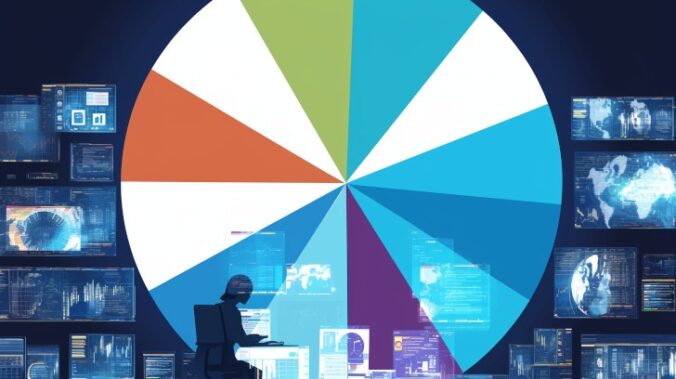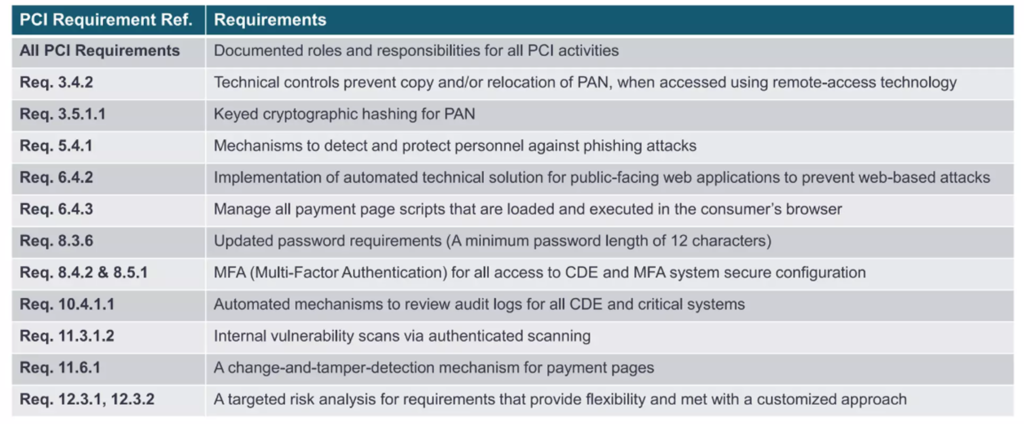
The questions we usually get asked, aside from why we prefer not to be a QSA (which, although it is fairly dated and need to be revised, have been answered), despite us doing PCI-DSS since 2012 in Malaysia, is why we hardly work with different QSAs in our PCI-DSS projects. Aren’t all QSAs the same? Aren’t all created equal?
Like everything in life, there are basis of variation. We are not here to say which is better, which is worse. It’s not in our culture to constantly provide a barrage of negative statements in regards to other companies and organizations, even with basis — because that’s not how we are wired.
That being said, we do have an internal list of companies (and QSAs) that we would perhaps have some less inclination to. This is due to either working firsthand with them, or mainly seeing some of the results of their work. Quite shocking some of the things we see. Additionally, we have also had clients who had suffered under their so called advisory and have asked us to step in for help.
So to the query on which QSA should you spend the next six months (or more) months with for your PCI Project? Let’s put a few options forward in a more quantifiable manner.
a) Experience
A question we get asked is why we generally don’t just work with local providers or assessors who are closer to home. It’s not because they are worse or better. It’s like comparing cars. They all have their pros and cons – we do not slag organizations off even if we would rather avoid some of them. But one way I would tell customers is, let’s look at experience first.
As of writing, we have 3065 PCI-DSS listed projects based on the Visa Provier List at https://www.visa.com/splisting/searchGrsp.do. The top 10 assessors on this list is as follows:
| Assessor | Projects |
| VikingCloud | 208 |
| Foregenix | 142 |
| ControlCase | 113 |
| SECTEC | 103 |
| Compliance Control | 96 |
| Coalfire Systems | 86 |
| SISA | 83 |
| A-LIGN | 80 |
| CIPHER | 71 |
| atsec | 71 |
| Total | 1053 |
The top 10 assessors make up almost 35% of the projects listed. Those are heavy hitters. Suffice to say a lot of projects remain unlisted – level 2 Service providers, SAQ projects, Merchant projects etc. So actual projects (included non listed) for each assessor is probably a lot higher. To put in context, there are the following numbers of projects for assessors:
| Projects | Number of Assessors |
| 1 | 54 |
| 2 | 35 |
| 3 | 25 |
| 4 | 22 |
| 5 | 18 |
| 6 | 13 |
| 7 | 13 |
| 8 | 7 |
| 9 | 10 |
| 10 | 3 |
There are 200 Assessors out there with 10 or less projects listed. In defence, some of these are actually the same company under another name, so it’s not like 100% accurate in terms of this overview. So out of 262 assessors in that list that does PCI, 77% of them have 10 or less projects, showing that it’s not that easy to get that number to a 100 or more. Again I will reiterate, quantity doesn’t automatically means it’s better. Some may argue, the more projects you have, the more quality is suffered. That is a good point. And I have experience with some of the overseas QSAs in that smaller project number group that I would gladly give a project and have a beer with. They are really good and extremely passionate about PCI-DSS and I’ve learnt truckloads from them. We are just saying this is one starting indicator you may want to jump from because most service providers start off with this off the bat when they are presenting their services: how many customers ‘trust’ them.
b) Location
This is slightly misleading in a sense that the query we ask is: do we need a QSA who is local? Local here would mean they have an office in the country they are serving the customer in. This argument, while it seems to initial hold some credence, is actually self defeating. And a bit strange, when most organisations now prefer to be known as regional or global, instead of touting themselves as just local players. If they use this as a plus point, then by going to their overseas customers, they are technically disputing the same argument point they are advocating. Most QSAs won’t use this track because they know that a QSA company needs to at the very least operate regionally, or if you want to be focused on a country – then, fine, take USA. The reason why the service provider list does not have a breakdown of all 195 countries (or if you are a Malaysian Minister, then that would be 500 countries) of Earth is that being a QSA is tough work. The breakdown is in regions and the only countries listed there are US and Canada because US makes up almost 35% of the listed projects there.
Think about the last time you dealt with a QSA. Did you have access to that QSA through messages or call? Did you call for a meeting and that QSA came as required? Did that QSA respond quicker? Was that QSA able to reply your queries, technical or otherwise related to your compliance in clear and consistent manner? Did they insist on you paying them more for advisory or delayed your project? Did they upsell more services to you that was unplanned and unknown? Think about the positives and negative experience you had.
Those are more pertinent queries than deciding someone to be ‘local’. That point is actually really moot. Because in almost all projects, the bulk of the work will be handled by a consultant. QSAs by definition should be global or regional anyway. In the economics of being a QSA (explored in another article), being a QSA operating in a single country would probably not be cost sustainable. Especially in a country where the currency is slightly more than the value of a turnip. So the assessor will still have to be flying to other places anyway. Therefore, it doesn’t really matter whether its local, regional or global when it comes to being an assessor, the question is how accessible and communicable they are.
In that sense, we strike a balance – we are local to Malaysia, or any other country that we operate in (we have presence in 150 countries as a global network), and we provide the independent, technical advisory needed to be consultants. We are not QSAs so we don’t need to be pulled all over the place in other PCI projects all over helter-skelter. We are all certified in various certifications and more product certs that I can throw a stone at. We are operational people all with more than a decade of experience so you won’t have a wide-eyed associate with a checklist coming to you. We also have non-IT services as we are also tax advisors, corporate financiers, risk managers, compliance directors – we aren’t just an IT company aiming to push IT services or cybersecurity solutions for you – our DNA is in advisory and consulting.
Enough of blowing our own horn then. Which leads me to item 3:
c) Reference
It’s important to not just look at a list of customers. I have a client who gets annoyed with seeing a presentation with a list of logos without any context of the work. Some may list down large companies or merchants under their so called ‘Customer’ but without any context. You know what? Fine. I can list down all telcos, up to twenty PLCs, more than half a dozen of oil and gas and more banks than I can swing a bat at just because I have given them ‘training’. Come on.
Look past that veneer and look at actual references in the industry. Is there a positive experience? Is there someone out there willing to endorse good will? Are there any bad experiences? Another area I got asked is, if the assessor has been involved in a breach before. This almost needs a new article to explore. Look, we all know PCI doesn’t guarantee non-breach. It’s not a panacea to world hunger. Its more important to note that what is the outcome of the investigation or forensics before we go witch hunting. It’s meaningless to state for instance, the top QSAs would never experience any breaches in their existence. For sure, some of them would need to deal with this one way or another and to see if indeed there was an oversight. If there’s none, then the breach could be down to myriad of reasons outside of PCI-DSS control. Remember – assessors are not operational. They enter an audit in good faith. Witchunting a QSA just because of a breach involvement without context or having the final conclusion is a narrow minded, irresponsible approach to assessing capability (or culpability). If the QSA is truly to blame, wouldn’t they be put in remediation by the Council? There you go.
One thing you will never catch us doing is giving an opinion about certain things that we don’t have the full context on. It’s simply not something we are comfortable at. If we see some issue with a report from other QSAs, even if it looks strange, the reply is always: what is the context of this, and there must be a reason why it was interpreted as such. So that gives us a more balanced view and not just mouth off without understanding. As the proverbs say: “The more talk, the less truth; the wise measure their words. “
d) Cost and Resources
Most PCI projects have the conflicting pull of cost and resources. A QSA with a lot of resources and consultants will be very useful. The last thing you want to see is a QSA not responding and after 3 months rushes you for evidences. Cost still plays a huge role in PCI-DSS and it’s not as if things are getting cheaper. With version 4.0, there is more work for QSAs to do and they likely will pass down some of these costs to the customers. This still remains a very subjective item in this filtering exercise — a QSA charging your liver and kidney for PCI isn’t ideal, but if a QSA comes in with a price that resembles a popsicle in a flea market, I would likely stay away as well. We all know how much effort PCI is. We don’t want a situation where halfway through, the bulk of invisible costs comes pouring in like the army of Mordor, or else things will not be done. If you want to build your house, have most of the materials cost sorted out. If there is a VO, don’t let it cross a threshold of percentage of your initial cost. Having a QSA who understands this and is willing to negotiate is important. Even if the cost is not lowered (because to be fair, QSA work is not trivial), then negotiate for future services, or better payment terms – anything else to meet in the middle.
e) Stamp of Trust
Are there any stamps of trust for QSAs?
No, there isn’t. At least not officially. However, I would like to highlight there is this thing called Global Executive Assessor Roundtable (GEAR) found here: https://www.pcisecuritystandards.org/about_us/press_releases/pci-security-standards-council-announces-2022-2024-global-executive-assessor-roundtable/
There are 28 QSAs in the GEAR currently, with the purpose below:
The Roundtable is an Executive Committee level advisory board comprised of senior executives from PCI SSC assessor companies. The 2022-2024 GEAR consists of 28 organizations, with the Roundtable term running 1 September 2022 – 31 August 2024.
“The Council depends on the input of a wide range of stakeholders to provide PCI SSC with valuable insights,” said PCI SSC Executive Director Lance J. Johnson.” With the release of version 4.0 of our PCI Data Security Standard this year, it is even more important to have active representation from every corner of the globe from an assessor perspective. Assessors are critical in assisting the Council with our effort to improve and evolve payment data security.”
PCI COUNCIL
The QSA we often work with, Controlcase is one of them, and have been reappointed, pointing out that in terms of reference, the Council considers their input as ‘valuable insights’. This is one of the list we look at, especially when requested about QSAs. Are they involved in GEAR?
IN SUMMARY
Like choosing a car, there is really no guarantees actually that your experience will be immaculate when it comes to PCI-DSS considerations. The above are just possible filters you can decide on when it comes to choosing your next QSA partner to embark your journey on. Or you can roll a dice or consult with the gods. Disclaimer of course is that we have not worked with ALL QSAs yet, so this still remains a rudimentary filter when you are thinking of a QSA. Find a QSA that can actually do the hard yards and have proven themselves with Project references and quality, Global Reach and experience, Positive Customer feedback and respect from the industry and finally, seen as an invaluable assistant to the almighty PCI Council themselves. In our personal opinion, it’s a start to look at these metrics and springboard from there. Because anyone can give a nice presentation or dress in a suit or talk negatively about other companies — but what are their numbers, references and contribution to the PCI council?
Drop us an email at pcidss@pkfmalaysia.com to learn more about PCI and other compliances like ISMS or ITSM or SOC!





